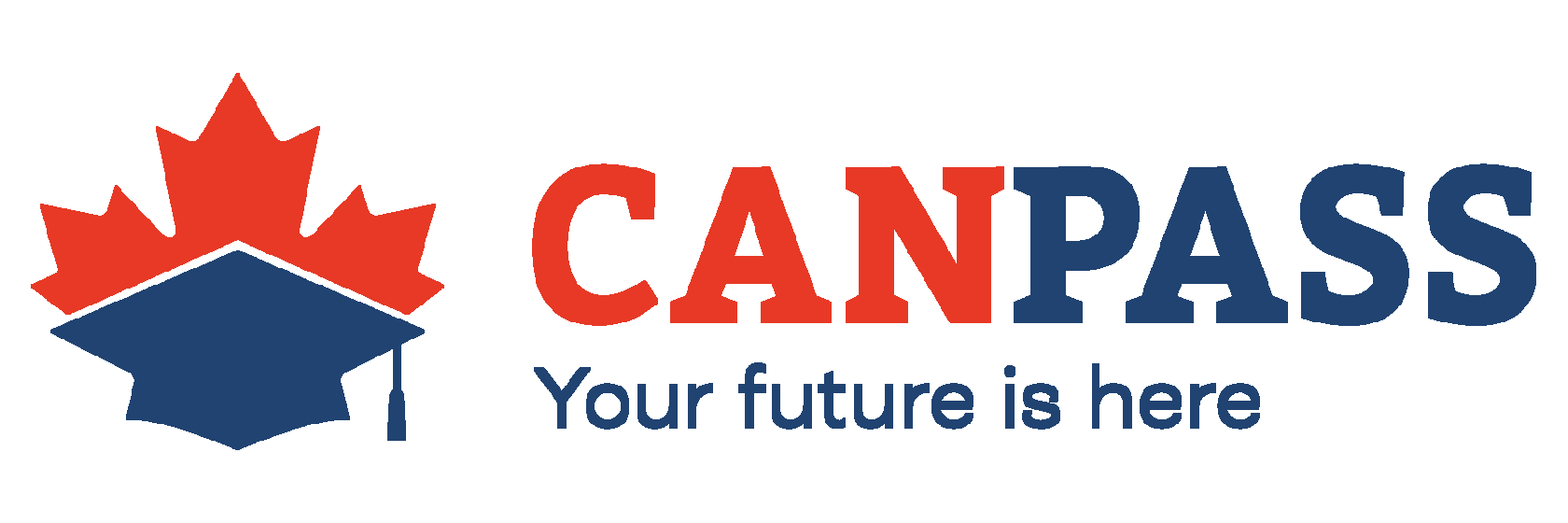Get a free consultation with Canpass Group expert
Ask a question
By clicking the button, you accept the service terms and conditions and privacy policy
Immigration to Canada through education
The safest way to immigrate: the main stages of immigration to Canada by study
Immigration to Canada through education
The safest way to immigrate: the main stages of immigration to Canada by study
The simplest way to immigrate to Canada is to get an education and seek further employment in the country. Because of the straightforward nature of this route, it it is the most popular method as well. The entire process ends up being much quicker than other immigration programs available. In 2−3 years after beginning their studies, an international student will be able to potentially obtain permanent resident status, and become a full-fledged citizen of Canada after another 2 years.
The simplest way to immigrate to Canada is to get an education and seek further employment in the country. Because of the straightforward nature of this route, it it is the most popular method as well. The entire process ends up being much quicker than other immigration programs available. In 2−3 years after beginning their studies, an international student will be able to potentially obtain permanent resident status, and become a full-fledged citizen of Canada after another 2 years.
Language level confirmation
Enrolling in a college or university
Obtaining a study permit and student visa
Obtaining a work permit and work visa
Searching for an employer and employment
Registration for the Express Entry system and applying for permanent residence
Получение канадского гражданства
1
2
3
4
5
6
9
Language level confirmation
This stage involves passing an international exam in English or French or passing a preparatory program at a Canadian school. For admission to a Canadian educational institution, an international student must speak one of the two state languages at the level required for training. The level is confirmed by a certificate for passing the IELTS, TOEFL or TEF exam. Each university sets the minimum score for admission independently. As a rule, results should not be lower than 6.0 for IELTS. If an international student does not speak the language at the required level, they can improve general English and retake the test or enroll in Canada through a special Pathway program.
This stage involves passing an international exam in English or French or passing a preparatory program at a Canadian school. For admission to a Canadian educational institution, an international student must speak one of the two state languages at the level required for training. The level is confirmed by a certificate for passing the IELTS, TOEFL or TEF exam. Each university sets the minimum score for admission independently. As a rule, results should not be lower than 6.0 for IELTS. If an international student does not speak the language at the required level, they can improve general English and retake the test or enroll in Canada through a special Pathway program.
Language courses and Pathway
Enrolling in a College or University
In general, the program choice depends on a few different factors. This includes the student’s current level of education, their goals and available budget, whether they are aiming for a college or a university, and the duration of the program. In addition, the abilities and interests of the applicant as well as demand for specific fields play a role in selecting a specialty. Lastly, international students should take into account that they must study at a DLI (Designated Learning Institution) licensed university in order to obtain a work permit in the future.
Before sending an application for admission to a selected university, you will need to confirm the list of required documents and submission deadline on the official website. Generally speaking, the main documents are a certificate and an application with grades, the results of a language exam and a letter of motivation. Deciding on which semester to begin your studies is part of this process. Applications for admission to Canadian universities for most programs are accepted three times a year: in September, January and May.
Before sending an application for admission to a selected university, you will need to confirm the list of required documents and submission deadline on the official website. Generally speaking, the main documents are a certificate and an application with grades, the results of a language exam and a letter of motivation. Deciding on which semester to begin your studies is part of this process. Applications for admission to Canadian universities for most programs are accepted three times a year: in September, January and May.
In general, the program choice depends on a few different factors. This includes the student’s current level of education, their goals and available budget, whether they are aiming for a college or a university, and the duration of the program. In addition, the abilities and interests of the applicant as well as demand for specific fields play a role in selecting a specialty. Lastly, international students should take into account that they must study at a DLI (Designated Learning Institution) licensed university in order to obtain a work permit in the future.
Before sending an application for admission to a selected university, you will need to confirm the list of required documents and submission deadline on the official website. Generally speaking, the main documents are a certificate and an application with grades, the results of a language exam and a letter of motivation. Deciding on which semester to begin your studies is part of this process. Applications for admission to Canadian universities for most programs are accepted three times a year: in September, January and May.
Before sending an application for admission to a selected university, you will need to confirm the list of required documents and submission deadline on the official website. Generally speaking, the main documents are a certificate and an application with grades, the results of a language exam and a letter of motivation. Deciding on which semester to begin your studies is part of this process. Applications for admission to Canadian universities for most programs are accepted three times a year: in September, January and May.
More about education in Canada
Obtaining a study permit and student visa
After an international student receives a Letter of Acceptance to the university and pays the tuition fees, they can apply for a study permit and a student visa (Study Permit). This will allow them to stay in Canada for as long as they are studying in the country. In order to obtain a student visa, the student will need a few more documents in addition to the letter of enrollment. This includes proof of sufficient funds to live abroad, a confirmation of employment, and lastly a passport with a history of international travel. Moreover, copies of all documents must be translated into English or French and notarized. Another mandatory step in the application process is submitting biometric data — this means a medical examination is often requested by an accredited physician.
Upon completing their studies, the international student will receive a diploma or certificate depending on their chosen program. A diploma from a Canadian university is an indisputable advantage in terms of obtaining a high-paying job and status in the country. The diploma will provide the employer with proof of knowledge and qualifications of the graduate in question, as well as assist in further immigration to Canada. Completion of a study program in Canada also provides a significant increase in points when it comes to the assessment of immigration applications.
Upon completing their studies, the international student will receive a diploma or certificate depending on their chosen program. A diploma from a Canadian university is an indisputable advantage in terms of obtaining a high-paying job and status in the country. The diploma will provide the employer with proof of knowledge and qualifications of the graduate in question, as well as assist in further immigration to Canada. Completion of a study program in Canada also provides a significant increase in points when it comes to the assessment of immigration applications.
After an international student receives a Letter of Acceptance to the university and pays the tuition fees, they can apply for a study permit and a student visa (Study Permit). This will allow them to stay in Canada for as long as they are studying in the country. In order to obtain a student visa, the student will need a few more documents in addition to the letter of enrollment. This includes proof of sufficient funds to live abroad, a confirmation of employment, and lastly a passport with a history of international travel. Moreover, copies of all documents must be translated into English or French and notarized. Another mandatory step in the application process is submitting biometric data — this means a medical examination is often requested by an accredited physician.
Upon completing their studies, the international student will receive a diploma or certificate depending on their chosen program. A diploma from a Canadian university is an indisputable advantage in terms of obtaining a high-paying job and status in the country. The diploma will provide the employer with proof of knowledge and qualifications of the graduate in question, as well as assist in further immigration to Canada. Completion of a study program in Canada also provides a significant increase in points when it comes to the assessment of immigration applications.
Upon completing their studies, the international student will receive a diploma or certificate depending on their chosen program. A diploma from a Canadian university is an indisputable advantage in terms of obtaining a high-paying job and status in the country. The diploma will provide the employer with proof of knowledge and qualifications of the graduate in question, as well as assist in further immigration to Canada. Completion of a study program in Canada also provides a significant increase in points when it comes to the assessment of immigration applications.

Ask a question
Finding an employer and employment
A minimum of one year of full-time work experience in Canada is required to become a permanent resident of the country. Work experience must meet a number of requirements: you need to be officially employed, work legally, and receive a salary. At the same time, it is not necessary to work in accordance with the education received in Canada, but the chosen specialty must be above a certain level of the Canadian classifier of professions (NOC).
A minimum of one year of full-time work experience in Canada is required to become a permanent resident of the country. Work experience must meet a number of requirements: you need to be officially employed, work legally, and receive a salary. At the same time, it is not necessary to work in accordance with the education received in Canada, but the chosen specialty must be above a certain level of the Canadian classifier of professions (NOC).
Express Entry Registration and Applying for Permanent Residence
After completing their studies and obtaining the necessary work experience in Canada, an applicant for citizenship must register in the Express Entry candidate selection system. Having collected the required number of points, the candidate will receive an invitation to apply for permanent residency status.
After completing their studies and obtaining the necessary work experience in Canada, an applicant for citizenship must register in the Express Entry candidate selection system. Having collected the required number of points, the candidate will receive an invitation to apply for permanent residency status.
Express Entry

Ask a question

